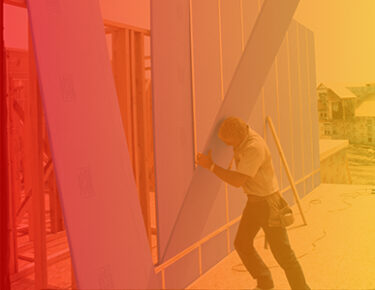 Fire Resistance
Fire Resistance
How to design fire and sound wall assemblies by building type
National Gypsum Company’s newest AIA-approved continuing education course provides advice for evaluating fire and sound requirements

In commercial construction, acoustical design and performance continue to take on an increasing role in code requirements and industry guidelines. This is particularly true for healthcare facilities, schools and multifamily dwellings, where the benefits of sound control for occupant productivity, privacy and health must also be integrated with fire-rated wall assemblies that ensure proper egress and life safety.
National Gypsum Company’s newest AIA-approved continuing education course — Best Practices: Fire and Sound Solutions by Building Type — is designed to help attendees improve their knowledge and understanding of:

- Acoustical concepts and terminology
- Sound Transmission Class (STC) rating guidelines for healthcare, schools and multifamily
- Coordination of fire and sound requirements
- The fire and acoustical performance of wall assemblies by building type
The course covers:
- Acoustic design, concepts and terminology
- STC rating requirements for specific applications
- Sound-reducing solutions for specific building types
- The role gypsum boards play in acoustic wall assembly performance
- How sound and fire ratings work together in various building types
"Designing for quality acoustics is no longer just for music rooms and auditoriums. Appropriate sound isolation is needed in homes, classrooms, medical facilities and high-rise condominiums."
Scott Hughes

Scott Hughes
Construction Design ManagerNational Gypsum Company
What does an STC rating measure?
Sound Transmission Class rates the effectiveness of a material or construction assembly to attenuate the transmission of airborne sound.
- The STC rating of a wall partition is the overall ability to resist the passage of airborne sound at 16 frequencies between 125 Hz and 4000 Hz.
- The higher the STC rating of a partition, the greater the partition’s ability to reduce the transmission of airborne sound from one side to the other.
- STC values are logarithmic, not linear.
The STC rating is determined through a standardized test defined by ASTM International. The test involves subjecting the wall assembly to a range of sound frequencies and measuring the sound reduction across those frequencies.
- ASTM E90, Standard Method for Laboratory Measurement of Airborne Sound Transmission Loss of Building Partitions and Elements defines how to conduct the test on a wall assembly.
- ASTM E413, Classification for Rating Sound Insulation covers methods of calculating single-number acoustical ratings for laboratory and field measurements of sound attenuation.
“Meeting STC ratings requires consideration of various potential sound sources, such as human speech, music, appliances and mechanical equipment,” Hughes noted. “Each source may have different sound frequencies, amplitudes and durations, necessitating a comprehensive approach to sound insulation.”
How is sound transmitted through walls?
Designing for sound transmission through wall partitions can be challenging because of the amount of variables in how sound travels, including structure-borne sound, airborne sound and flanking sound.
- Structure-borne sound transmission: Walls are typically designed to provide structural support, privacy and thermal insulation, rather than sound insulation. The materials and construction techniques used can greatly impact the transmission of sound, as sound can easily travel through common structural materials, such as wood, steel or concrete.
- Airborne sound transmission: Sound can propagate through walls as airborne sound waves. These waves can easily pass through gaps and joints in the wall. Achieving airtightness and sealing all potential sound leakage points is crucial in minimizing sound transmission.
- Flanking paths: Flanking paths refer to alternative routes that sound can take to travel around or through a wall, such as via ceilings, floors or other interconnected building elements, including electrical outlets. Identifying and addressing these paths is crucial in achieving effective sound isolation.
In addition, selecting a sound-rated assembly that also meets the required UL fire rating can vary by building type.
- Healthcare facilities
- Egress requirements: 1- and 2-hour fire protection
- STC requirements: Adjacencies, public spaces and privacy
- Multifamily dwellings
- Egress requirements: 1- and 2-hour fire protection
- STC requirements: Unit demising walls and corridor walls
- Schools and classrooms
- Egress requirements: 1-hour fire protection
- STC and NIC sound protection promotes better learning
Sign up today
To learn more about specific sound control solutions for each of these three building types, reach out to your region’s National Gypsum construction design manager to schedule a presentation of Best Practices: Fire and Sound Solutions by Building Type.
As part of National Gypsum’s Building Knowledge Together® program, the company provides access to free continuing education courses that qualify for AIA health, safety and welfare learning units. Each course draws on identified market needs, including technical knowledge gaps and common challenges, to develop a curriculum that is both high value and relevant to professionals working in the construction industry.
Related Blog Posts
Related Podcasts

Episode 4: Understanding the ratings behind acoustical wall, ceiling and roof assemblies
Familiarize yourself with STC, IIC, CAC and OITC rating classes a...
Listen Now







